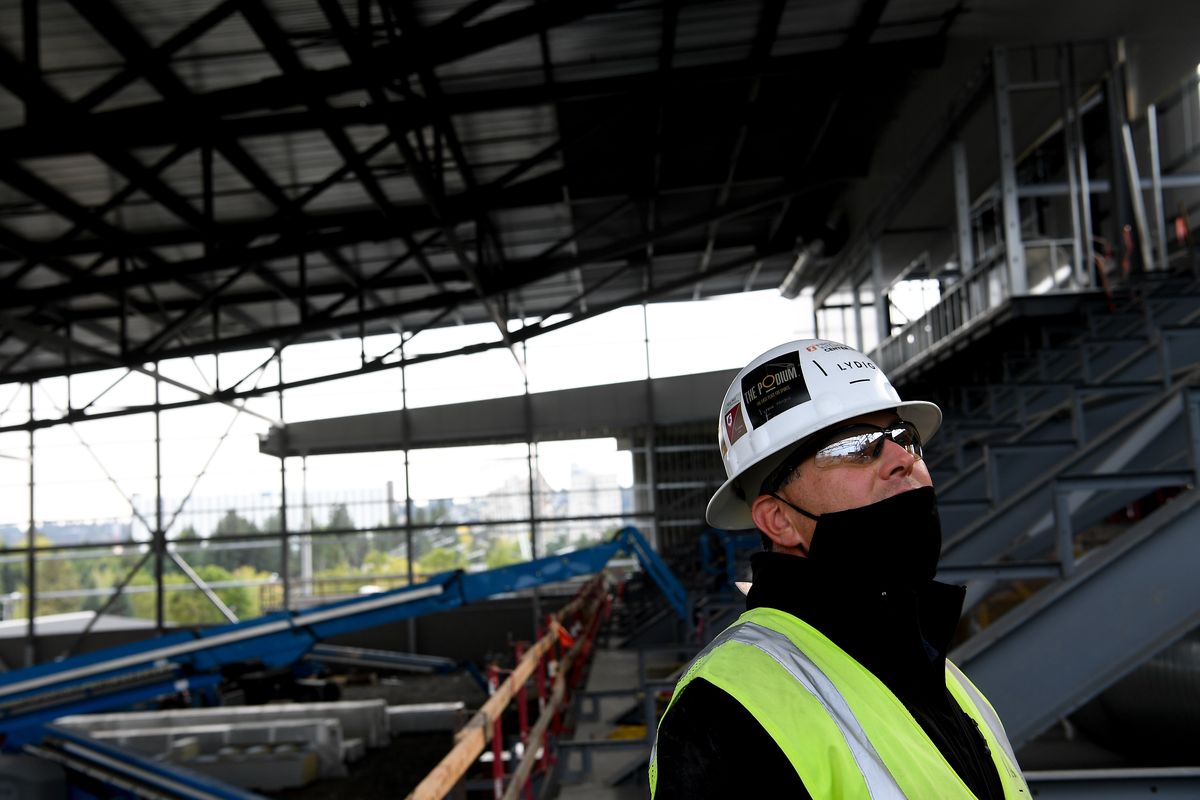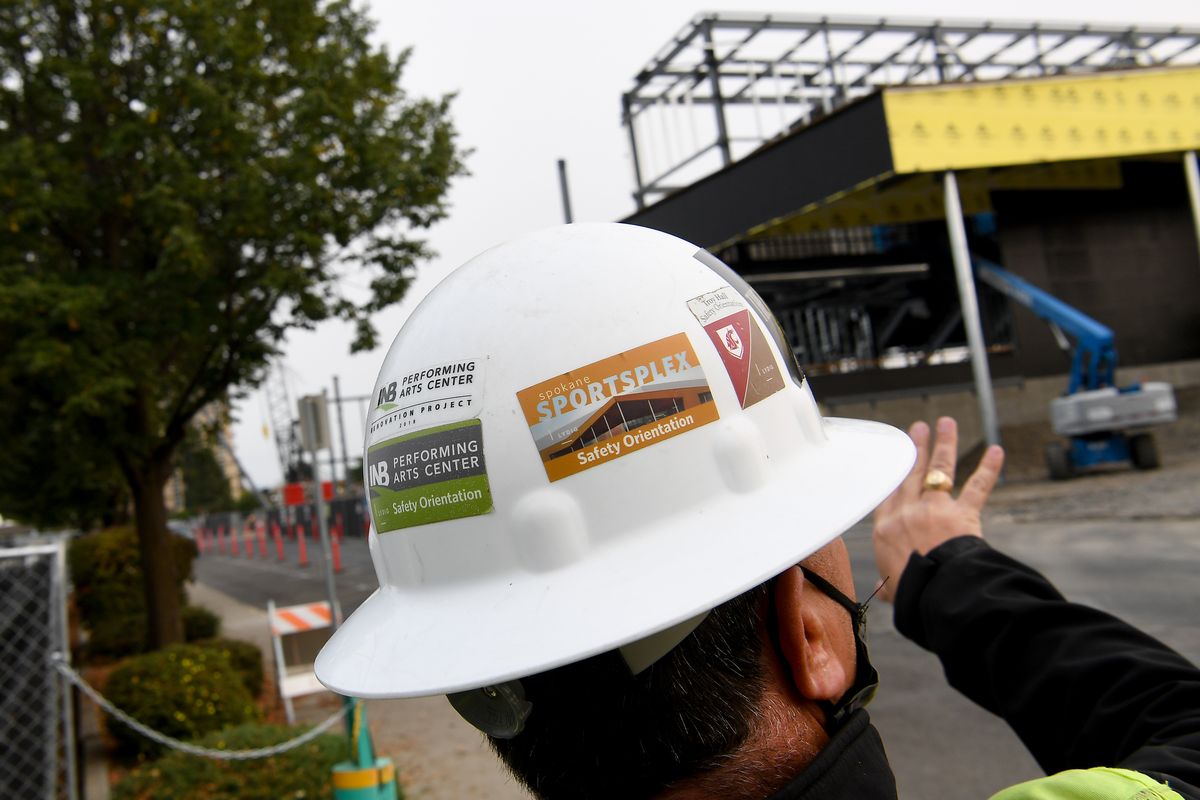‘The Podium’ construction continues during pandemic in downtown Spokane

The last of the 60-ton trusses supporting the roof of the $53 million indoor sports arena in downtown Spokane was installed this week, a milestone in the completion of what’s now known as “The Podium.”
For Ryan Ford, the project superintendent in charge of the project for Lydig Construction, the weight of the beams supporting the roof is just one indicator of The Podium’s massive scale.
“It’s definitely a different feeling than anybody who had seen some of the renderings, some of the little pictures,” Ford said during a tour of the facility Thursday afternoon. “You get out in the middle of it and you go, wait, this is a big building.”

When completed in fall 2021, The Podium will be able to seat 4,500 spectators in bleachers that will rise several stories above street level. Its 135,000 square feet will be able to play host to basketball, volleyball and martial arts competitions for collegiate and national-level athletes, but the main draw for local sports officials will be its 200-meter banked track powered by hydraulics, a feature that is more commonly found in fieldhouses on the East Coast.
“If you’re an athlete today, you still have to go to either Birmingham or New York,” said Stephanie Curran, chief executive officer of the Public Facilities District that will operate the new building.
The indoor sports complex in downtown, discussed for years, is a separate project from efforts to bring an outdoor sports stadium to downtown, an idea rejected by voters in 2018. The Podium is being built with funds from bonds sold by Spokane County, reserve funds from the Public Facilities District and other funding from the city of Spokane.
The bowels of the building, carved into an area of basalt north of Riverfront Park that required the blasting of about 20,000 tons of rock, will house amenities familiar to collegiate athletes. They’ll also be available to the club sports and other events that could be programmed in the space through the district’s partnership with the Spokane Parks Department, which owns the land on which the structure is being built.
That includes a trainer’s area, showers, an area for drug testing and a 60-meter warmup track, all below where spectators can sit and take in a variety of track and field competitions, including the pole vault and throwing events. Other amenities on the concourse include a catering kitchen for private functions, and a press and timing box built at the apex of the bleachers for observers and officials.
Curran said the district worked with World Masters Athletics to design the throwing cage and jump pits to more closely adhere to their competition needs. The group is in charge of Masters Track and Field, an organization in charge of running over 35 track and field competitions worldwide. The PFD and Spokane Sports Commission are working on a bid for the 2024 Masters World Indoor Track and Field Championships, Curran said, an event that would bring in 3,000 athletes from more than 80 countries.
Lydig is constructing The Podium to match the renovations of Riverfront Park occurring on the southern edge of the new building’s footprint. That includes a switchback trail that will bring visitors right up to The Podium’s front doors from the regional playground being constructed below.
A deck overlooking downtown Spokane on the building’s southern edge will likely be a gathering spot for visitors, Ford predicted.
“This is really going to be a neat spot,” he said. Ford has worked on several arena-type projects, including a recreation center at the University of Texas at San Antonio, “but never something of this scale,” he said.
People will be able to look out over the regional playground, the bare netting of the remade U.S. Pavilion in Riverfront Park and Spokane’s skyline from a deck built over the site of a former dairy, relics Lydig found during construction and that are on display on a shelf in the construction trailer on-site. Those include glass bottles and jugs from Scotland dating back to the 19th century, and car parts.
The completion of the trusses signaled the “topping out” of the structure, a milestone with ceremonial significance in construction dating back to ancient Scandinavia. Ford said he anticipated the building will be enclosed by Thanksgiving, allowing a crew of dozens of workers each day to finish construction inside the building.
With an opening in fall 2021, the completion will hopefully line up with a return to normalcy for large gatherings, Curran said, and give the local economy a boost right when it needs it.
“We’re going to be opening up, and hopefully getting money back into the local economy,” she said.